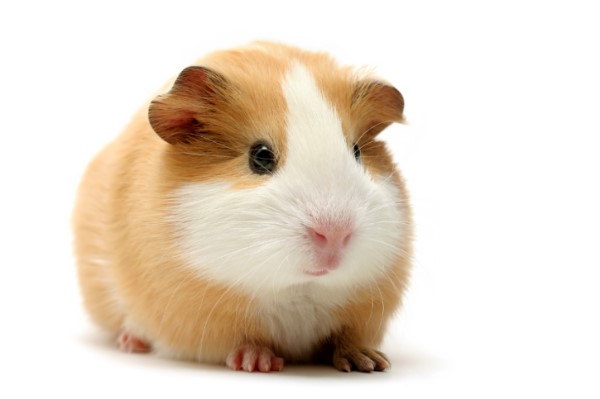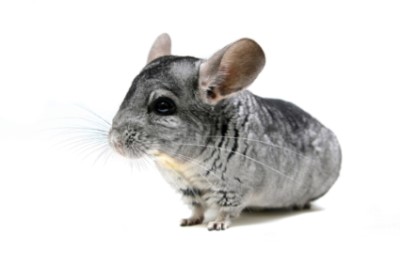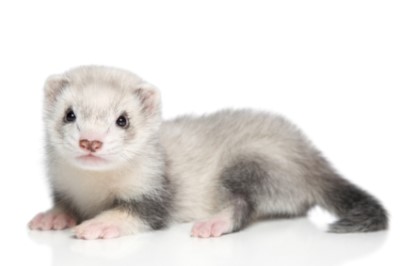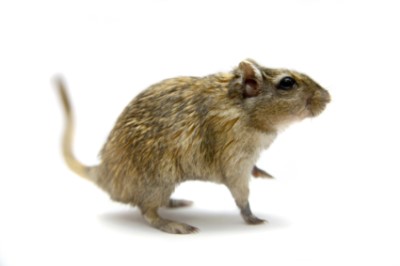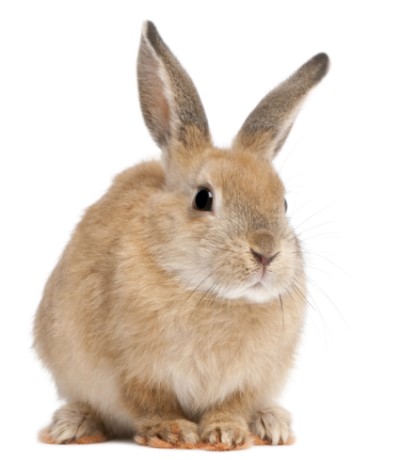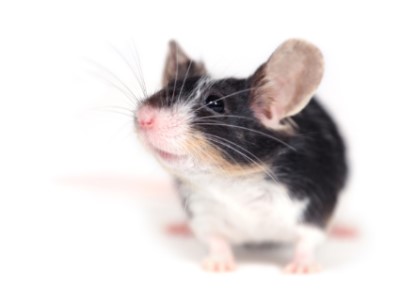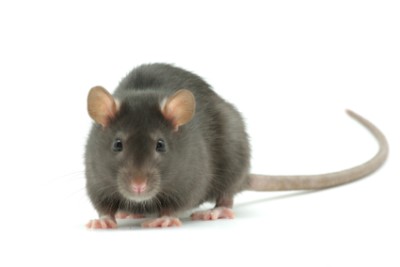There are thirteen popular breeds of domesticated guinea pigs according to the American Rabbit Breeders Association. Color, body type, coat texture, and markings vary from one breed to the next. Here is a brief list of the guinea pigs available as pets today:
· Abyssinian—one of the oldest breeds with a coarse, dense coat
· Abyssinian Satin—much like the Abyssinian, except he has a shiny coat
· American—the most popular breed
· American Satin—much like the American, except his coat is shiny and slick
· Coronet—has a long coat with a large coronet or rosette that runs from the nose to the ears
· Peruvian—once known as the Angora Guinea Pig, this breed’s coat is so long it drags on the ground
· Peruvian Satin—much like the Peruvian, except her coat looks like fine shiny silk
· Silkie—known for its soft, long locks of hair
· Silkie Satin—much like the Silkie except the Silkie Satin’s coat is more dense and has a different sheen
· Teddy—has a thick coat that is ¾ of an inch long and similar to a child’s teddy bear
· Teddy Satin—much like the Teddy except the Teddy Satin’s coat has a special shine not seen in the Teddy
· Texel—a newer breed of Guinea Pig that has a curly coat
· White Crested—looks like she has a white fluffy hat between her ears while there are no other white hairs on her body
Common Reasons for Surrender
Guinea pigs, like other small animals, are often viewed as disposable pets. A child begs for a pet and the parents acquiesce. After a while, the child loses interest and the parents don’t want to care for the guinea pig, who is then surrendered to a shelter or to a rescue. Sometimes a family member discovers he is allergic to the guinea pig, which can be avoided by fostering a pig first to determine if she is the right match and if anyone has an allergic reaction. Finally, people often move and cannot take their guinea pig with them either because their new home is not pet-friendly, or they cannot afford the high pet deposits. (*Many rescues allow interested adopters to first foster a pet to determine if that pet is the right fit for their family.)
Do your research before adopting a guinea pig and, if possible, foster a guinea pig or a pair of guinea pigs to determine if you’re ready to commit to adopting. Guinea pigs require specialized medical care, a special diet, and must be handled with care as they can easily become injured or even killed, if dropped. Children should always be supervised around a guinea pig. Guinea pigs do not make good “starter pets” nor are they a child’s pet. Parents should be prepared to care for the guinea pig. In fact, guinea pigs require educated owners who know how to properly care for their pig and who are willing to pay for quality food and often-high veterinary expenses.
Pros
Most guinea pigs love sitting on their humans’ laps and are perfectly content during long stretches of petting. While they are social animals, guinea pigs typically do well at home while their humans are at work provided they have a guinea pig companion. Every pet comes with initial costs, but the start up cost for guinea pigs is fairly modest.
Cons
You must be educated on how to properly care for a guinea pig to care for one properly. You may find it difficult to find the ideal products and a knowledgeable pet sitter for your guinea pig since they aren’t as common as dogs and cats. Guinea pigs also require specialized veterinary care, which may cost significantly more. Guinea pigs need spacious cages, which can take up a good deal of space in your home, and most are happier with a friend. Some people do not take into consideration the cost of having a guinea pig, or two, over five to seven years.
Diet
The staple of the guinea pig’s diet is hay, such as timothy hay or orchard grass. Alfalfa hay should only be given to baby guinea pigs and their mothers. Guinea pigs must have unlimited access to the hay of their choice. Hay is supplemented with a quality pellet. Pellets should be just that: Timothy hay-based pellets. They should not include any extras, such as corn or seeds. (Babies and their mothers can have alfalfa-based pellets.) Oxbow makes a popular and high quality pellets and hay.
Those guinea pigs that are at an ideal weight may have their pellets free fed. However, if your guinea pig is overweight or obese, consult with your veterinarian to determine how many pellets your guinea pig should have each day. Water should be accessible all of the time; never put anything, such as vitamins, in the water.
A healthy guinea pig diet also includes fresh foods and at least three servings of vegetables each day. A detailed list of acceptable vegetables can be found Metropolitan Guinea Pig Rescue.
Guinea pigs love sugary treats like grapes and bananas, but only give them to your guinea pig sparingly and be sure the pieces are very small. Otherwise, that’s all she’s going to want to eat. One blueberry each day serves as a healthy and popular treat with most guinea pigs. Never feed your guinea pig treats sold in pet and grocery stores. Opt for fresh fruit instead.
Exercise
Designate a protected area in your home where your guinea pig can get out of her cage and run around for at least a few hours a day. Your guinea pig might just want to explore or play, but at least she’ll be out of the cage. Never attempt to walk your guinea pig on a leash and don’t stick them in a hamster ball. Guinea pigs enjoy the fresh outdoor air. However, make sure they are in a safe enclosure and are supervised. Never leave a guinea pig unattended outside.
Possible Health Issues
Guinea pigs are prone to such health issues as abscesses, urinary stones, urinary tract infections, skin problems, mites, and reproductive cysts in females.
Litter
Ideally, you should provide your guinea pig with a safe bedding such as fleece, which can be easily taken out of the cage and washed, paper-based bedding like Carefresh, or aspen shavings. Some guinea pig rescues and guinea pig owners make and sell fleece beds and tents for those with guinea pigs. Fleece can be taken out, changed, and washed and will save on the cost of having to frequently buy bedding.
Housing
Provide your guinea pig with the largest cage you can afford. Most of the cages you find at pet stores, which claim are sufficient for guinea pigs, simply aren’t big enough. A cage should not have wire bottoms, which will hurt your guinea pig’s feet. Never house your guinea pig in an aquarium. Many guinea pig owners opt to build their own habitats. Doing so is often much cheaper than buying a too-small store cage. Check out Guinea Pig Cages, Your Cavy at Home for ideas on how to construct a large home for your guinea pig.
Entertainment
You will know you have a happy guinea pig when he popcorns into the air. Popcorns show a guinea pig’s happiness and excitement. Guinea pigs enjoy time out of their cage to run around, to walk, and to explore their protected space. Young pigs have fun playing tag with other young guinea pigs.
We want to thank Metropolitan Guinea Pig Rescue and New Jersey Guinea Pig and Hamster Rescue for help with this profile.
